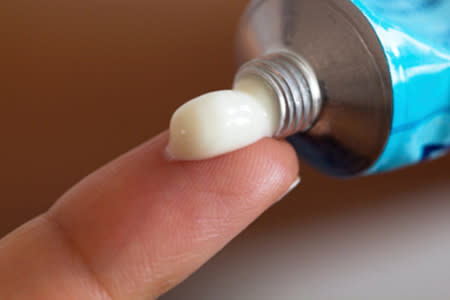Self-care: 10 ways to relieve discomfort from scleroderma
People get different types of scleroderma, and there are many signs and symptoms.
While signs and symptoms vary from person to person, most people develop skin problems at some point. Hardening and thickening skin is common. Dry skin, itch, discolored skin, and visible blood vessels are also possible.
Dermatologists recommend the following when scleroderma affects the skin:
If you have skin problems, see a dermatologist who has experience treating scleroderma. Treatment for your skin can help reduce signs and symptoms, helping you to feel more comfortable.
Applying medicine
Following a dermatologist’s treatment plan may reduce skin changes and discomfort.

Make time to treat your skin. Having scleroderma can feel overwhelming. If you are also treating other symptoms, it can feel less important to treat the skin. Treating the skin is important. Started early, treatment can help you maintain your ability to move when hardening skin develops over a joint like a finger, knee, or jaw.
If a physical therapist has given you exercises to do at home, do them! This can prevent or slow down loss of movement. These exercises can also help increase blood supply to your skin, which can heal with healing.
Keep warm any area with thickened skin and sores. When the skin thickens and sores develop, it leads to poor circulation in that area. Keeping this area warm can increase blood flow, which can help with healing.
Protect your skin from getting injured. Calcium deposits can develop if you injure your skin. These can be painful. They feel like firm bumps underneath the skin.
Gently clean affected skin. Skin with scleroderma is dry and fragile. When washing, you want to be gentle. Use a mild fragrance-free cleanser, applying it gently with your fingertips. Rinse the cleanser away with warm water.
Moisturize dry skin. Scleroderma can make the skin very dry. Dry skin is more easily injured. Infection and sores can develop.
Use a humidifier when the air feels dry. This can reduce dry skin.
If you smoke, stop. Smoking wreaks havoc on the skin. It also worsens other symptoms of scleroderma like Raynaud phenomenon (extreme sensitivity to cold and stress). Because two types of scleroderma—limited cutaneous scleroderma and diffuse cutaneous scleroderma—can cause scarring in the lungs, stop smoking is especially important.
Avoid beauty treatments that tighten your skin or increase the amount of collagen in your skin. The skin is hard and tight because your body is producing too much collagen. For this reason, you want to avoid collagen injections, a type of filler used to plump up the skin. You also want to avoid skin care products that contain collagen.
Regular eye exams are necessary
If your child has morphea on the head or neck, regular eye exams from an ophthalmologist (eye doctor) are necessary to watch for possible damage. Aggressive treatment can stop irreversible eye damage.

Images
Image 2: J Am Acad Dermatol. 2012;67(4):769-84.
Reference
 Atopic dermatitis: More FDA-approved treatments
Atopic dermatitis: More FDA-approved treatments
 Biosimilars: 14 FAQs
Biosimilars: 14 FAQs
 How to trim your nails
How to trim your nails
 Relieve uncontrollably itchy skin
Relieve uncontrollably itchy skin
 Fade dark spots
Fade dark spots
 Untreatable razor bumps or acne?
Untreatable razor bumps or acne?
 Tattoo removal
Tattoo removal
 Scar treatment
Scar treatment
 Free materials to help raise skin cancer awareness
Free materials to help raise skin cancer awareness
 Dermatologist-approved lesson plans, activities you can use
Dermatologist-approved lesson plans, activities you can use
 Find a Dermatologist
Find a Dermatologist
 What is a dermatologist?
What is a dermatologist?
